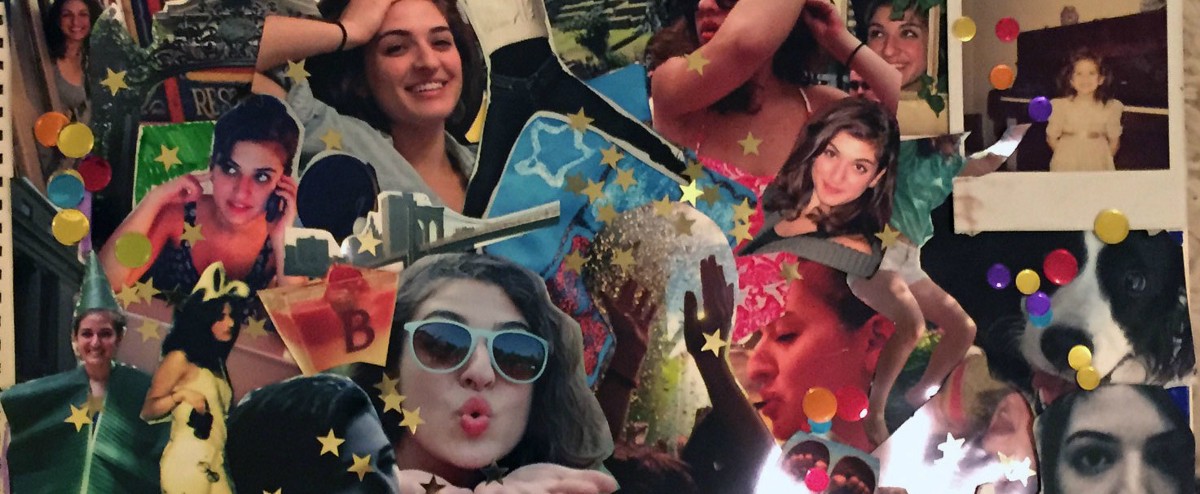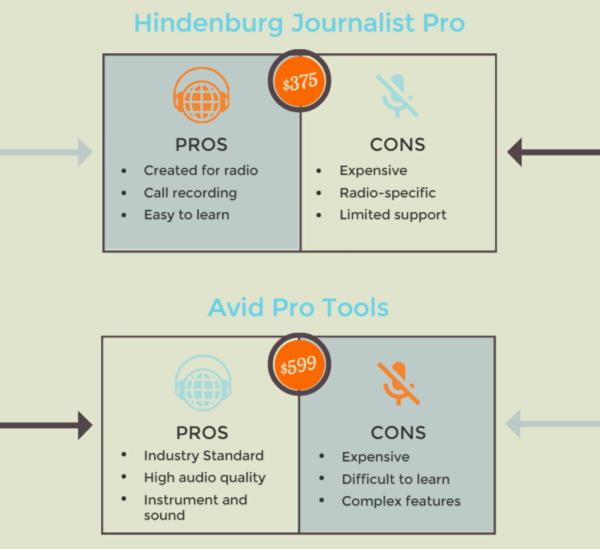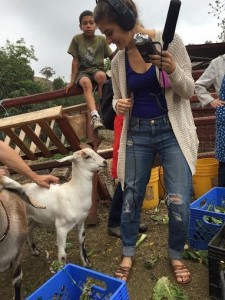By Simone Kovacs on December 9th, 2015
Gear Guide: Shara Morris on Podcasting

This gear guide series is a collaboration between Fractured Atlas and our partner KitSplit — check out their blog here!
Shara is a public radio producer and podcaster based out of Los Angeles. Her work has appeared on Marketplace, NPR’s Latino USA, KCRW, and more. She is currently producing two podcasts:” What’s Wrong With Me” featuring Time columnist Joel Stein, and Slate/Panoply’s #GirlbossRadio hosted by Nasty Gal founder Sophia Amoruso. She also hosts a bi-monthly podcast called Homemade News.
Can you give us a general overview of the gear one needs to make a podcast?
Shara: The great thing about podcasts is that they’re so accessible — you really don’t need that much gear to make something great! You could record in a studio with lots of fancy equipment, or you could use Skype to record your calls. I use a recorder, a shotgun mic, headphones, and editing software.
Let’s get nitty-gritty on gear: what specific equipment do you use and why do you like it?
S: At The Salt Institute for Documentary Studies, where I studied radio producing, my teachers recommended the Zoom H4n Digital Voice recorder. As soon as I graduated I bought it and I’ve never looked back. It’s reliable, collects good sound, and is great for anyone who is serious about getting into radio.
When I was solely doing radio I was primarily using a handheld mic, but now that I’m working more on podcasts, I invested in a shotgun mic as well. It’s so helpful for recording two people having a conversation — but be careful, this thing is sensitive! I use the Audio-Technica AT897 mic. I would definitely recommend spending good money on a mic; your sound will improve tenfold!
For headphones, I use AKG K44 Perception Full Size Headphones. I can hear my audio well and they don’t hurt my head — win-win!
In terms of editing programs for podcasts, I use Hindenburg, which is affordable and intuitive. ProTools is also very popular.

How do you pack all of that when you’re recording in the field? Can you talk about the best places to record?
S: There are so many great places to record good audio. Many times, when I’m tracking audio, I record in my closet or under a blanket — radio producers use this trick all the time!
If you’re interviewing someone, it’s always great to record them in their living room. It’s typically a place with good acoustics — carpeting on the floor, pillows on couches, curtains on the windows. I’ve even conducted an interview in a car! As long as you’re on a quiet street, cars can be great for capturing sound.
And as kind as your interviewee may be, don’t let them try to do the interview in the kitchen! Tiled kitchen floors and the sounds of fridges will always create a tinny sound.

How would you step up your game if you had unlimited resources? What’s the ideal podcast equipment setup?
S: Is this Hanukkah?! I have so many things on my radio wish list.
I’m hoping to upgrade soon on several fronts. I edit all of my pieces on my MacBook Pro, which I am proud to say is five years old! I’d love to get a new laptop that is faster and has more storage for all of my audio files.
I also want to get back to using ProTools. I know I just endorsed Hindenburg above, so you’re probably thinking, “This podcaster is a liar!” But as much as I love Hindenburg, ProTools is a more sophisticated product and it’s what I was trained on. Time to go back to my roots.
I’ve been meaning to get a pistol grip for my shotgun mic because I get shaky hands. And if we’re getting really fancy, my co-host Jen Rice and I would love a proper studio to record our bi-monthly podcast, Homemade News.
Do you have any other technical tips for someone starting a podcast?
S: Once you’ve done the hard work of producing and editing the podcast, you need to make sure people can actually listen to your beautiful radio pieces!
Dropbox is great for collaborating with others and saving files. I use it almost every day. I also recommend that you upload your files to SoundCloud and then link it to iTunes. You can also create a Stitcher account or upload your pieces onto Public Radio Exchange (PRX), which is an online marketplace for distribution, review, and licensing of public radio programming. It’s an excellent tool for early radio and podcast producers.
Now go forth and make some beautiful audio!
